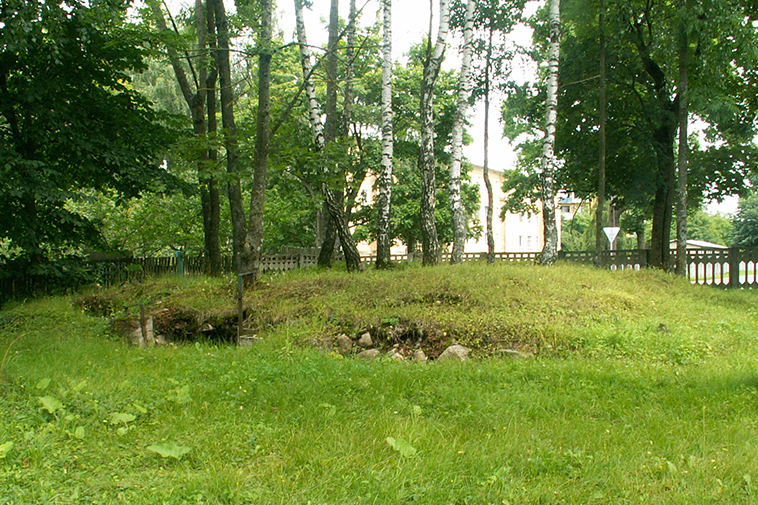- Home
- →
- Attractions
- →
- The temple-tomb of the Hutten-Czapsky
The temple-tomb of the Hutten-Czapsky
The Gutten-Chapski Family Mausoleum is one of the forgotten yet significant historical and cultural landmarks of Belarus, located in the village of Stankovo, Dzyarzhynsk District, Minsk Region. This place is associated with the renowned noble family of Chapski, who made a substantial contribution to the development of the Belarusian lands in the 19th and early 20th centuries. Although the mausoleum has not survived in its original form, its location remains an important element of the region's cultural landscape.
The site's current condition is a small earthen mound beneath which the remnants of an underground crypt are preserved. A tranquil and contemplative atmosphere reigns here, making the place especially attractive to tourists interested in family history, abandoned churches, and historic architecture. The mausoleum is included in the itineraries of tours around Belarus and can be a noteworthy stop during a tour from Minsk, dedicated to manor culture and noble heritage.
History of Creation
The mausoleum was constructed in 1835, during the flourishing period of the Chapski estate in Stankovo. The Chapski family, originally from the Polish nobility, actively participated in the political, economic, and cultural life of Belarus. The estate in Stankovo served as the family’s summer residence, and the mausoleum became their burial site. It stood near the main manor house, on an elevated site lined with alleys.
During World War II, the estate complex suffered severe damage. The main house of the Chapski family was completely destroyed. In the post-war years, in the 1950s, a boarding school was built on its foundations and still functions today. The mausoleum itself was demolished in 1961 as part of a campaign against religious structures. Only the underground crypt remains to this day, along with an iron door, which is now preserved in the school’s museum, keeping alive the memory of former grandeur.
Architecture and Spiritual Life
Architecturally, the Chapski mausoleum was a small domed burial chapel built in a classical style with elements of neo-Gothic, typical for the funerary architecture of affluent noble families. The building featured an underground crypt where members of the family were interred. An alley lined with greenery led to the mausoleum, which was harmoniously integrated into the estate’s landscape.
In addition to its funerary function, the chapel served as a place for memorial services and private worship. Prayers for the departed were held here, and family records were maintained. It was not only a sacred place but also a symbolic one, concentrating ancestral memory. The loss of the mausoleum was not merely a physical destruction but a cultural loss for the entire historical environment of the region.
Tours with a Visit to the Mausoleum
Today, tours that include a visit to the village of Stankovo and the Chapski estate feature a stop at the site where the mausoleum once stood. This is particularly interesting within the context of tours around Belarus focused on 19th-century architecture, noble estates, and the history of aristocratic families. A tour from Minsk to Stankovo can be organized as a standalone thematic trip or as part of a broader route through the Minsk Region.
During the tour, visitors will learn about the history of the Gutten-Chapski family, see fragments of the former estate layout, and visit the boarding school museum where artifacts from the manor’s past are preserved. Special attention is given to the location of the mausoleum, the story of its destruction, and the few elements that have survived.
You can book a tour with a visit to the Gutten-Chapski mausoleum on the portal ekskursii.by. This is a unique opportunity to connect with a nearly vanished yet deeply meaningful monument of Belarusian historical and cultural heritage.

